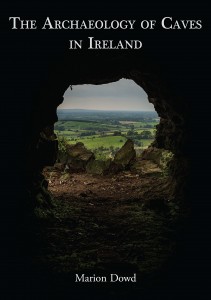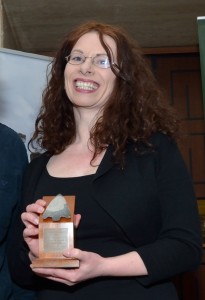
Ireland has long been a popular destination for cavers the world over. But there is much more to Irish caves than simply their sporting interest. Archaeologist Marion Dowd’s book, The Archaeology of Caves in Ireland, has just won the magazine Current Archaeology’s Book of the Year award.
The book tells the story of how people have interacted with Irish caves in a variety of ways over the 10,000 years of human occupation of the island. In prehistory, underground worlds were associated with the dead and the spirit world, and there is ample evidence in caves to testify to their use for burials, funerary rites and votive depositions. Later, in various places, they were adapted as homes and places of storage.
Marion Dowd, a lecturer in Prehistoric Archaeology at the Institute of Technology in Sligo, draws on mythology, folklore, archaeology and religion in her examination of human use of caves and has a strong bias towards ritual interpretations of cave use and seems heavily influenced by the work of Jean Clottes and David Lewis-Williams, who view caves as providing an interface between two worlds, the mundane and the ‘otherworld’. Boundaries and liminal spaces figure largely in the book and in the opening chapter, ‘People in Caves, Caves in People’ comments that archaeological deposits in the dark zone of caves relate primarily to religious not secular activities, except perhaps for the concealment of valuable of people.
The first three chapters of the book provide an overview and set the scene for the later, period-specific chapters. Dowd gives a brief run down of caves in mythology and then examines the history of cave investigation in Ireland, as well as providing an outline of cave formation and details of the current state of research in Irish cave archaeology. The remainder of the book takes the reader through a chronological examination of cave archaeology through the Mesolithic, the neolithic, the Bronze Age, the Early Medieval period, the Medieval period and the post-medieval to modern periods.

The book is well illustrated and copiously referenced, with a lengthy bibliography and a useful appendix of all the caves of archaeological significance in Ireland (which in this book encompasses both Northern Ireland and the Republic). It provides a valuable overview of Irish cave archaeology and explores universal themes in both mythology and folklore, and will be of interest to both cavers and archaeologists alike. For my liking there’s perhaps rather too much emphasis on ritual and theories of sensory deprivation, but then I never wholly bought into the same ideas when applied to cave art, either, and as such there are ideological aspects of the book that I have to take with a large pinch of salt. But that notwithstanding, there is still a wealth of information here and the book is undoubtedly a major work and a very impressive achievement.
In addition, Oxbow Books have maintained their usual high standards of production and quality throughout.
Reviewer: Linda Wilson
| Publisher | Oxbow Books |
|---|---|
| Date Published | 31 January 2015 |
| ISBN-10 | 1782978135 |
| ISBN-13 | 978-1782978138 |
| Format | hardback |
| Pages | 320 |
| Price | £ 50 |
